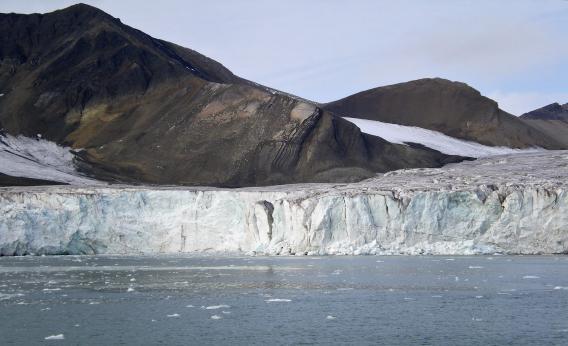The North Pole is warmer than ever, and some weather experts say this is why Sandy took an uncharacteristic detour to the Jersey Shore. This summer, scientists reported that Arctic sea ice was at the lowest levels ever recorded. The trouble is, their records go back only about 30 years—about the time scientists began to think that what happens in the Arctic could impact weather farther south.
Now they are hoping that a crowd-sourcing project may widen the lens on what we know about the Arctic.
The U.S. Navy has been visiting the Arctic since 1839, and each ship’s logbooks detailed the day’s weather (along with lost equipment, pirate abductions, and other events of the day). The trouble is, the logbooks are old (albeit carefully preserved) and are written in occasionally hard-to-read, 19th-century sailor scrawl. Who has the time to go through thousands upon thousands of old Navy logbooks?
The American public, of course! Old Weather—a site that allows naval history buffs and climate change geeks alike to tally old weather data in the name of better science—has already helped British climate change scientists access more than 1. 6 million weather observations from logbooks recovered from Royal Navy voyages. Now it’s coming to the former colonies.
Last week, the National Archives put more than 150 years’ worth of logbooks from U.S. Navy and Coast Guard expeditions on Old Weather. When Old Weather users are finished transcribing the details of the past, researchers at the National Oceanic and Atmospheric Administration will use that information to fill in the holes in their existing datasets. The logbooks come from seven Arctic voyages that took place between 1850 and the World War II era.
Scientists have used crowd-sourcing to solve research riddles in the past. Gamers helped unlock the mystery of an HIV enzyme in three weeks—after scientists had struggled with the problem for more than a decade. Anyone can archive cancer samples or categorize whale sounds through the citizen science portal Zooniverse. Crowd-sourcing science works best with tasks that are easy but require an army of research assistants—which scientists can now recruit through the Internet.
Can we trust that 19th-century sailors were making accurate reports of the weather? Kevin Wood, a researcher from the NOAA Pacific Marine Environmental Laboratory who is working on the Old Weather project, thinks so. “The commanding officer would have kept close track of the weather as communicated through the hourly log entries,” said Wood. “Commissioned officers would have received some meteorological training, and there are also rather specific instructions in the first pages of every logbook.”
There are safeguards in place to make sure that the modern-day transcribers are getting it right, too. A log on Old Weather has to be recorded by three different users before it is accepted. Kathy Wendolaowski, an Old Weather regular and an EPA contractor who spends several hours a day on the site, explained that while the dated handwriting might cause a volunteer to mistake “supper” for “suffer,” for instance, transcribing a number is more straight-forward.
And with Sandy putting climate change back on the public’s radar, Old Weather will probably see a lot more hands on deck.
